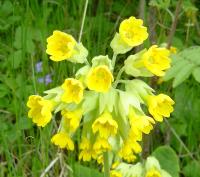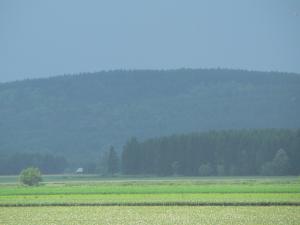What does the Duke of Burgundy butterfly prefer?

The biodiversity of the world is rapidly decreasing, much due to the increasingly intensive forestry and agriculture. Many butterfly species are affected by this, one of them being the Duke of Burgundy (Hamearis lucina) (Kruys 1998). The Duke of Burgundy has, like many other butterfly species, one specific host plant, in this case cowslip (Primula veris), or under some conditions primrose (Primula vulgaris) (Emmet & Heath 1989). The host plant is the site for egg-laying and thereafter the only food source of the larvae until pupation. That causes the specific site conditions of the host plant to be very important. The plant must be positioned to have the right temperature and not being too exposed to the sun, as well as providing protection from predators and grazing animals.
The Duke of Burgundy has remaining populations in most parts of Europe, even though they are declining severely in many places. The species is registered in the Swedish redlist as vulnerable and since the beginning of the 20th century it is almost completely dependent upon conservation measures (ArtDatabanken 2005). Populations in Sweden are mainly located at Omberg and on the island of Öland (ArtDatabanken 2005).
To be able to save species at risk of extinction it is important to know as much as possible about the species and its preferences (Bourn & Thomas 1993). Therefore the aim of my study was to find the egg-laying and habitat preferences of H. lucina.
My results showed that the Duke of Burgundy has very specific habitat preferences, something that previous studies also have shown (Kruys 1998, Oates 2000). It was clear that the butterfly is sensitive both to heavy grazing and abandonment. The females preferred to lay their eggs on taller, flowering plants with a higher number of leaves than randomly selected plants. These characteristics are probably important because it is easier for the females to find flowering, taller plants (Oates 2000). It is not well known how the Duke of Burgundy females find suitable host plants, but it has been shown that many other species use visual searching (Porter 1992). Taller plants with a higher number of leaves may also be important because it gives the larvae a larger amount of food. It is an advantage for the young larvae if the food source is sufficient until it becomes larger. Small larvae that leave its host plant are less likely to find another host plant, and therefore a less likely to survive, than larger larvae are (Rausher 1979). The density of cowslips was another important factor in the females' choice, probably also because it is easier for the larvae to find a new host plant if the old one dies or is finished off. Egg-laying females chose plants growing in much higher densities than randomly selected plants.
The females preferred plants situated in a taller vegetation when the average vegetation height was below 10 cm. On the other hand they chose plants in a shorter vegetation when the average height was more than 10 cm. When all study sites were analysed together it was shown that the females on average chose a taller vegetation. The reasons for these preferences may be that taller surrounding vegetation protects the plant better from direct sunshine and dehydration. A too tall sward however is not preferable, since surrounding grasses outcompete cowslips, resulting in fewer plants (Oates 2000).
The Duke of Burgundy females chose cowslips situated closer both to bushes, trees and the forest edge than average. This is probably because the bushes and trees protect from direct sunshine and also from grazing animals and predators. The females also preferred leaves with higher nitrogen content than average. I could show with my study that taller plants had higher nitrogen content and were growing in a shadier environment. It is difficult to know if the females chose the plants because the light conditions were right, because the height was the preferred or if it depended on the nitrogen content.
Conclusively
a suitable site for the Duke of Burgundy should have plenty of bushes and woodland
edges, be lightly grazed and also contain areas with lots of cowslips.

References
ArtDatabanken, Sveriges lantbruksuniversitet (2005) Nationalnyckeln till Sveriges flora och fauna; Fjärilar: Dagfjärilar. Ruter Media Group, Laholm.
Bourn NAD, Thomas JA (1993) The ecology and conservation of the Brown Argus butterfly Aricia agestis in Britain. Biological Conservation 63, 67-74.
Emmet AM & Heath J (1989) The moths and butterflies of Great Britain and Ireland, vol 7, part 1, Hesperiidae-Nymphalidae the butterflies. Harley books, Colchester.
Kruys I (1998) The Duke of Burgundy Butterfly (Hamearis lucina Linneaus 1758). Observations regarding its ecology on Omberg in Östergötland, Sweden. Entomologisk Tidskrift 119: 2, 77-82.
Oates M (2000) The Duke of Burgundy – conserving the intractable. British Wildlife 11:4, 250-257.
Porter K (1992) Eggs and egg-laying; The ecology of butterflies in Britain; ed. Dennis RLH, Oxford University press, Oxford.
Rausher MD (1979) Egg recognition: its advantage to a butterfly. Animal Behaviour 27, 1034-1040.
Responsible for this page:
Director of undergraduate studies Biology
Last updated:
05/31/06
